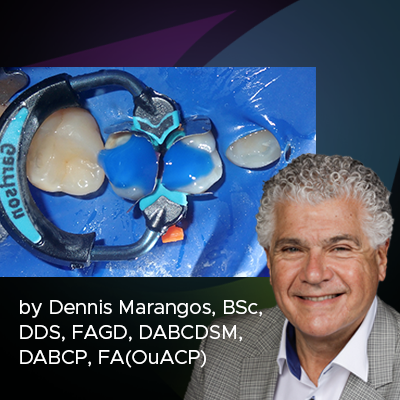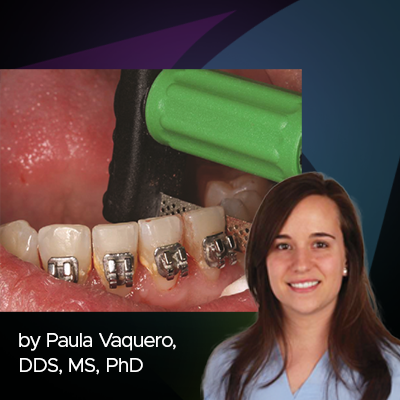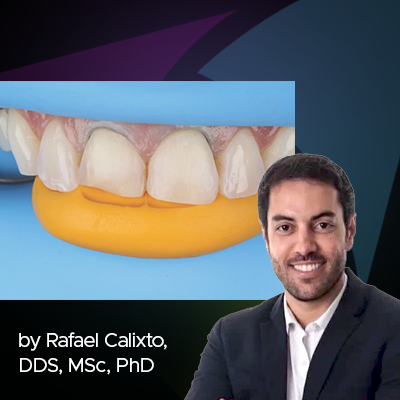
How to Replace Large Amalgam Restorations with Core Material without the Use of Matrix Bands
As shown in the case photos below, the patient presented with two large amalgams on #18 and #19 that required crowns. Normally, if you’re going to build these teeth up, you would remove the entire amalgams, put matrix bands around the teeth, and then fill the teeth with core material. However, instead of fully removing the amalgam, simply remove only the center portion while leaving the interproximal of the amalgams to serve as a matrix prior to forming the core.
As seen in Photo 3, Cosmedent’s CosmeCORE™Blue was used so that when the tooth is prepped, you can easily distinguish the core material from the tooth. If it happened to be an all-ceramic crown, you could use the A2 or White CosmeCORE, but when you’re working on a metal or gold ceramic crown, Blue is the optimal choice. Notice that the amalgams are still in place and holding the core material. To achieve final preparation (Photo 4) for temporary crown placements, simply remove the remaining amalgam, leaving the core material in place.
This method will ultimately save you time because you no longer need to use a matrix band around the teeth. Additionally, you avoid the risk of any gingival bleeding caused by the matrix bands.
"I use Cosmecore because I don’t like the way other core build up materials prep. Most materials are too soft and often gouge when prepped. Cosmecore will not gouge. The ability to build up a tooth without it slumping is also paramount in developing an ideal material. You can stack it around a post or into a prep without it slumping. The working time is ideal and you can add to it if you have any voids. It comes in three different shades which is important when doing metal vs. all ceramic crowns. The depth of cure is excellent and it is a dual-cure material." - Dr. Bob Margeas, DDS Co-Developer of Cosmecore
Cures to 7mm depth
Radiopaque
Sets hard and cuts like dentin
Convenient automix
Cosmecore is injected into canal and post placed.
Cosmecore is injected into canal and post placed.
Final preparation for the crown.
About the Author

Bob Margeas, DDS
Dr. Margeas graduated from the University of Iowa College of Dentistry in 1986 and completed his AEGD residency the following year. He is currently an adjunct professor in the department of Operative Dentistry at the University of Iowa. He is Board Certified by the American Board of Operative Dentistry. He is a Diplomate of the American Board of Aesthetic Dentistry, a Fellow of the Academy of General Dentistry, American Society for Dental Aesthetics and International Team of Oral implantologists (ITI). He has written numerous articles on esthetic and implant dentistry, and lectures and presents hands-on courses nationally and internationally on those subjects. He is currently the Editor in Chief of Inside Dentistry, on the Editorial Board of Compendium, and is a contributing editor to Oral Health in Canada. His memberships include OKU Honor Dental Society, American Academy of Esthetic Dentistry, and the American Academy of Restorative Dentistry. Dr. Margeas maintains a full-time private practice focusing on comprehensive restorative and implant dentistry in Des Moines, Iowa.
Discover More
This article was originally published in the Clinical Life™ magazine: Fall 2020 edition
Clinical Life™ magazine is a premier periodical publication by Clinical Research Dental Supplies & Services Inc. Discover compelling clinical cases from Canadian and US dental professionals, cutting-edge techniques, product insights, and continuing education events.
Subscribe to our emails to receive articles like this and be notified about our exclusive promotions.




